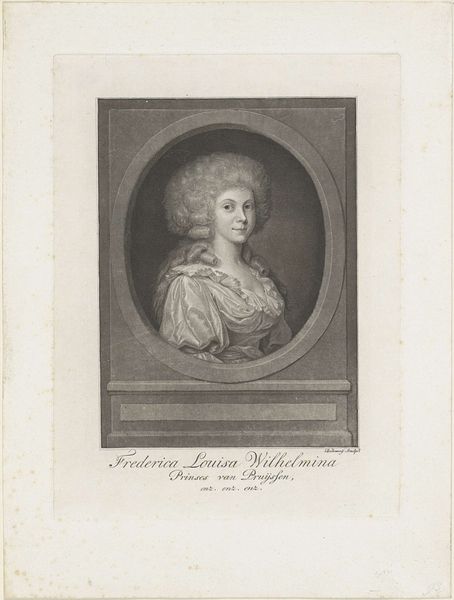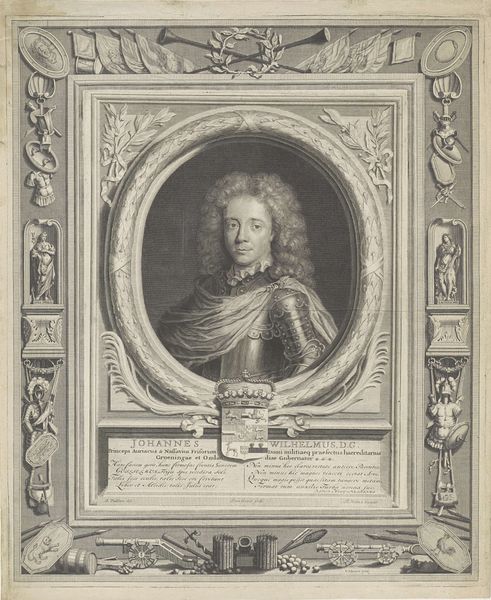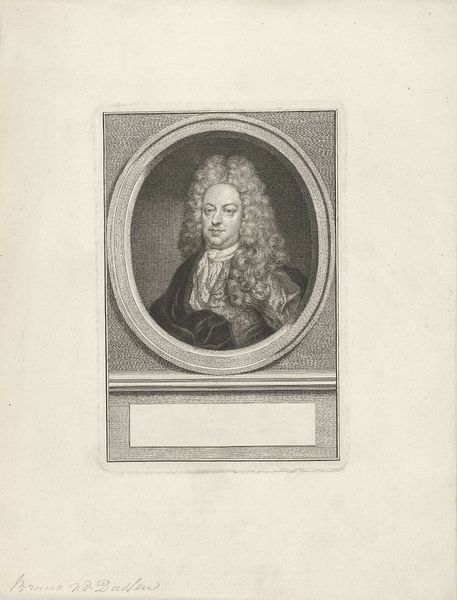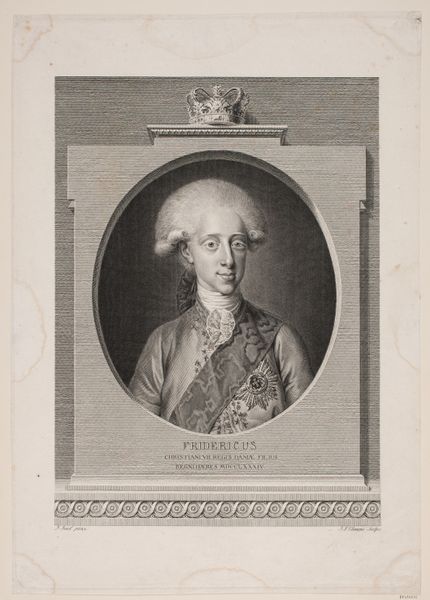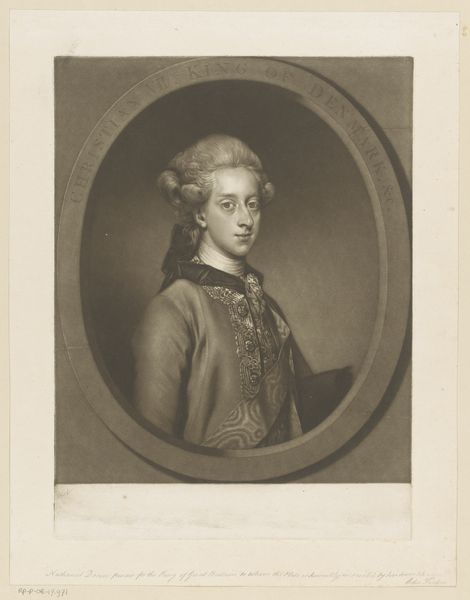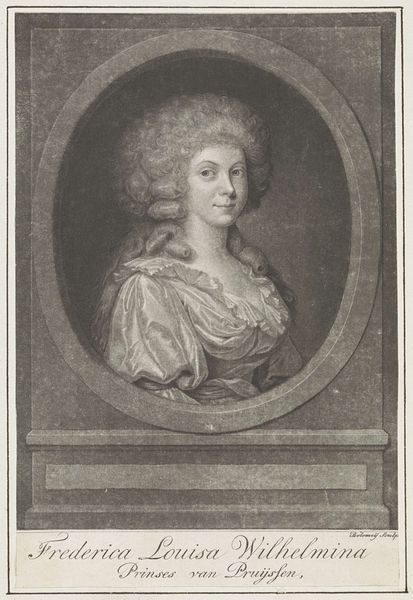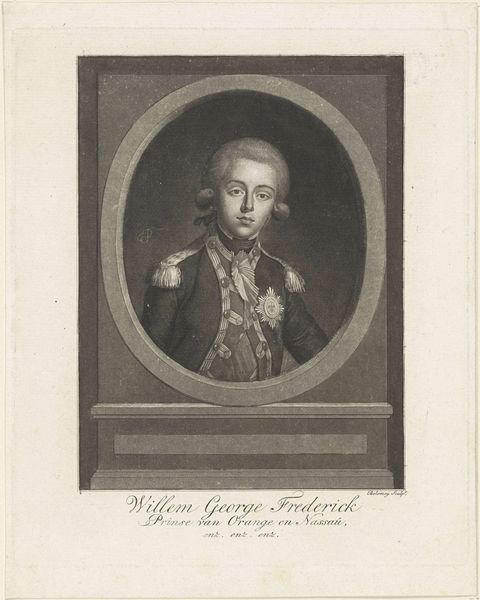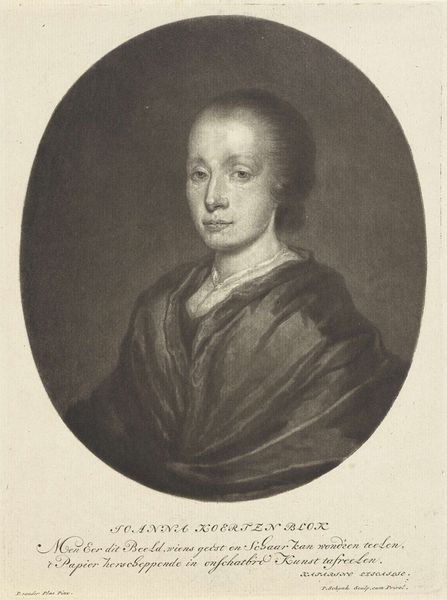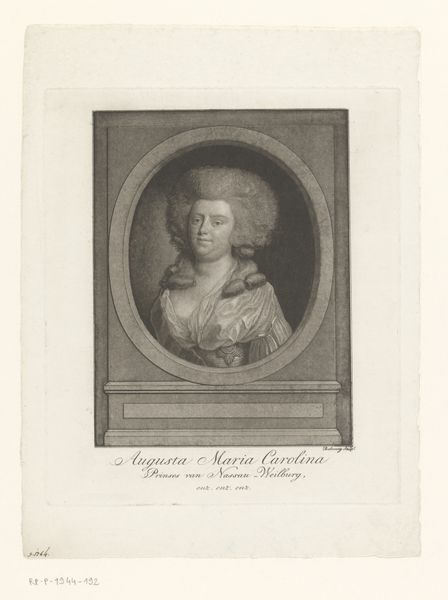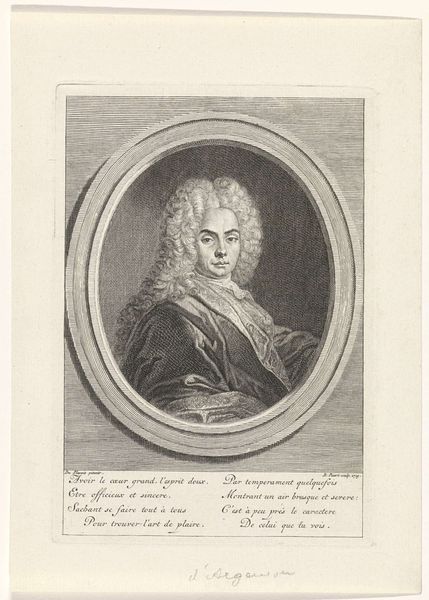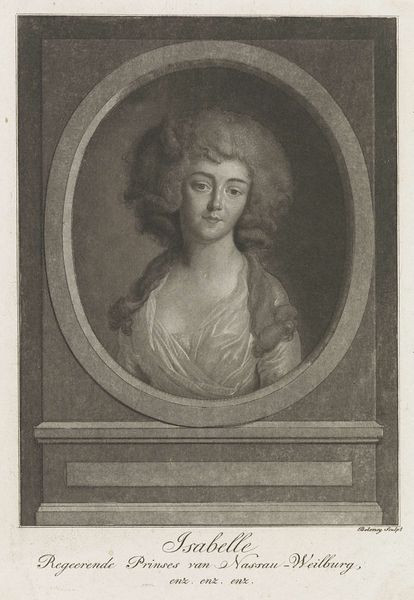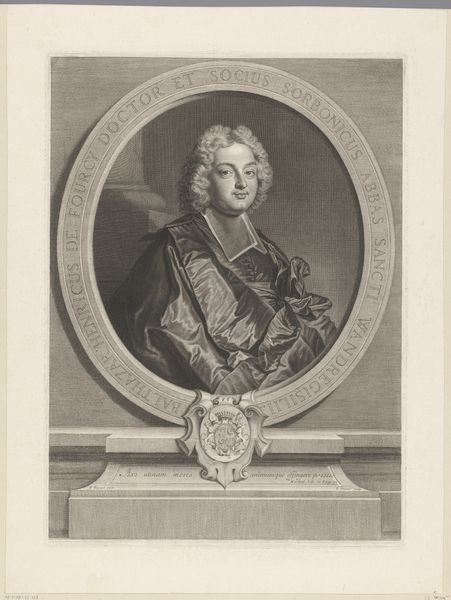
drawing, etching, pen
#
portrait
#
drawing
#
neoclacissism
#
etching
#
charcoal drawing
#
pencil drawing
#
pen
#
history-painting
Dimensions: height 269 mm, width 192 mm
Copyright: Rijks Museum: Open Domain
Editor: Here we have Benjamin Samuel Bolomey’s portrait of Wilhelmina of Prussia, created between 1767 and 1819, using pen, etching, and other drawing materials. It strikes me as a very formal and somewhat austere representation. How do you interpret this work? Curator: This portrait, viewed through a critical lens, unveils complexities regarding representation, gender, and power. It presents Wilhelmina within the constraints of her royal identity, shaped by societal expectations. Her image, meticulously crafted, adheres to Neoclassical ideals prevalent during that period, a style embraced by those seeking to legitimize power through historical allusion. Editor: I see the Neoclassical influence, particularly in the oval frame and the somewhat idealized features. But how does it speak to power, specifically? Curator: The controlled lines, the carefully composed image – they speak to the limitations placed on Wilhelmina as a woman in power. Consider her role during a turbulent political climate. This portrait, then, becomes not just a representation but also a carefully constructed piece of propaganda that reflected how the elite wanted to project power. The tension arises between her actual influence and the carefully curated image she presented to the world. Is this control, or oppression? Editor: So, are you suggesting that the portrait subtly critiques the restrictions imposed on women of power through its very formality? Curator: Precisely. It invites us to consider the nuances of her position – the privileges afforded to her by birth, and the limitations imposed upon her by gender and social expectations. What kind of dialogue can occur between historic notions of female nobility, and modern day understanding of intersectional feminism? Editor: That’s fascinating. I had initially perceived it as simply a formal portrait, but now I see the undercurrents of power, gender, and societal expectation that run beneath the surface. Thank you, that's given me a lot to think about. Curator: Indeed. Art enables dialogues between the past and present, hopefully inspiring necessary critical dialogues around identity and societal expectations.
Comments
No comments
Be the first to comment and join the conversation on the ultimate creative platform.
